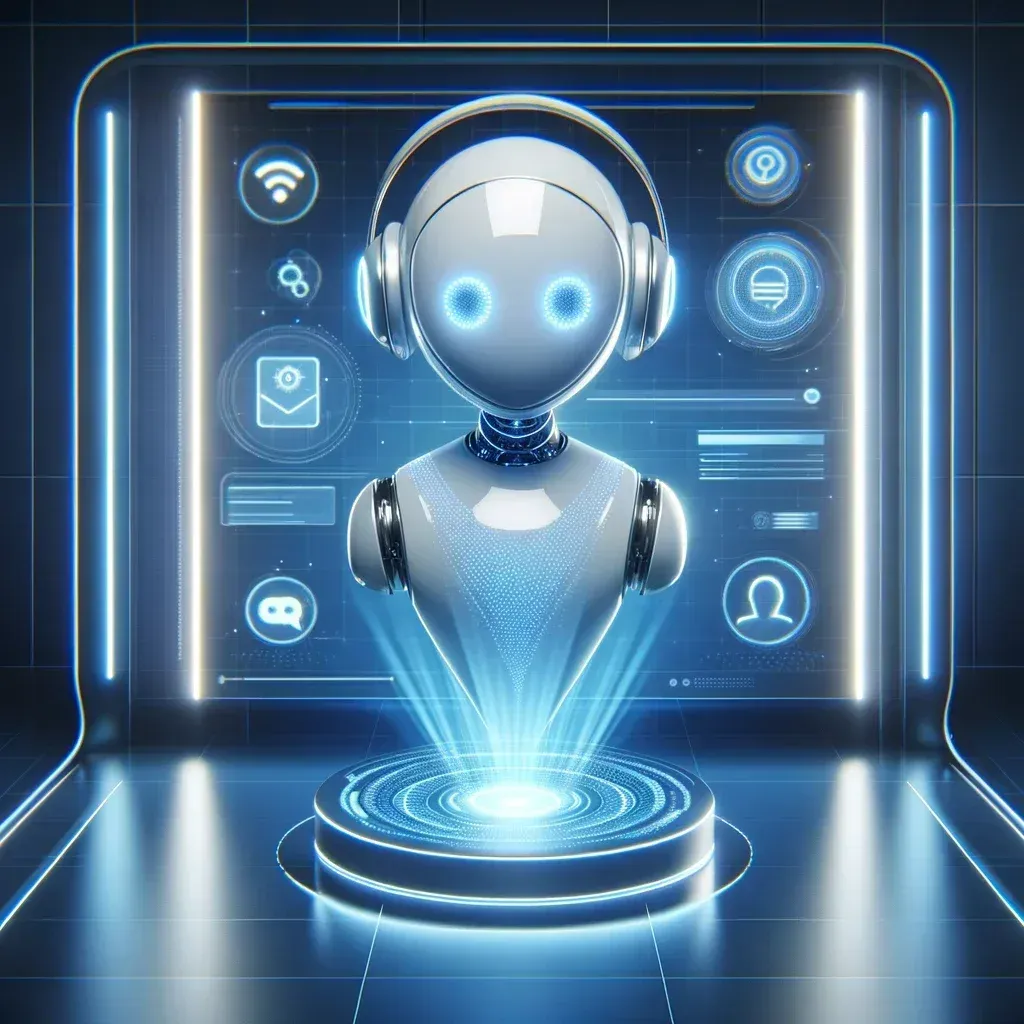AI Chatbots Terminology

Key components of AI chatbots:
- Natural Language Processing (NLP): This allows the chatbot to understand and process human language by breaking down the user’s input into understandable units, interpreting the intent, and managing context.
- Machine Learning (ML): Through machine learning, AI chatbots can learn from interactions to improve their responses over time. This involves training on large datasets to recognize patterns in text or speech.
- Dialogue Management: This is responsible for determining the flow of conversation, deciding on the next thing to say or do based on the user’s input, the chatbot’s objectives, and the system’s state.
- Integration Capabilities: AI chatbots often need to integrate with databases, customer relationship management (CRM) systems, and other business processes to access information that can help in responding to user queries.
- Multi-Turn Conversation: Advanced AI chatbots can engage in conversations that require multiple exchanges, maintaining context and managing coherent dialogue over the course of the interaction.
- Personalization: They can personalize conversations by remembering past interactions and preferences, thereby providing a more tailored conversational experience.
AI chatbots are used across various platforms, including messaging apps, company websites, and voice-enabled devices. They can range from simple rule-based systems that respond to specific commands to sophisticated AI-driven assistants capable of learning and adapting to user behavior.
The Importance of AI Chatbots

AI chatbots have become increasingly important in various sectors due to several compelling advantages they bring to businesses and users:
- Availability: Chatbots provide 24/7 assistance. They can handle customer inquiries outside of regular business hours, improving customer satisfaction by offering instant responses anytime.
- Scalability: They can interact with thousands of users simultaneously, which is not feasible with human agents. This scalability helps businesses handle high volumes of interactions without additional costs associated with scaling human staff.
- Cost Efficiency: Implementing AI chatbots can significantly reduce operational costs. They can automate repetitive tasks and free up human agents to handle more complex issues, thus optimizing resource allocation.
- Consistency: Chatbots can provide consistent responses to customers, ensuring that the information conveyed is accurate and uniform, which can be challenging to maintain with human agents.
- Data Collection: Chatbots can gather data from interactions with users, providing valuable insights into customer preferences, behavior, and feedback. This data can be used to improve products, services, and customer experiences.
- Personalization: AI chatbots can deliver personalized experiences by remembering past interactions and preferences. This level of personalization can lead to increased customer engagement and loyalty.
- Language and Accessibility: Advanced AI chatbots can interact in multiple languages and dialects, making them accessible to a broader range of users across different regions.
- Immediate Response: Chatbots can respond to queries instantaneously, reducing wait times for customers and increasing efficiency in problem-solving.
- User Engagement: With their conversational interfaces, chatbots can make the interaction more engaging for users, often employing a friendly and conversational tone that enhances user experience.
- Marketing and Sales: AI chatbots can assist in sales operations by guiding customers through purchase processes, recommending products, and even handling transactions.
By enhancing customer engagement, driving efficiency, and cutting costs, AI chatbots are a crucial component of digital transformation strategies for many organizations. They also continuously evolve as AI technology advances, becoming more sophisticated and valuable in diverse applications.
International Brands that use AI Chatbots
Several international brands have integrated AI chatbots into their customer service, sales, and marketing strategies to enhance customer experience and streamline operations. Some notable examples include:
- Sephora: The beauty brand Sephora has a chatbot on Facebook Messenger that helps customers book makeup appointments at their stores and provides product recommendations and reviews.
- H&M: The fashion retailer H&M uses a chatbot to provide fashion advice and recommendations based on user preferences, helping customers to navigate through their product catalog.
- Starbucks: Starbucks’ chatbot, available on their app and through voice-activated devices, allows customers to place orders, pay for them, and even access information about their loyalty program rewards.
- Domino’s: Domino’s Pizza created a chatbot named Dom for Facebook Messenger, allowing customers to order pizza and track their deliveries.
- Bank of America: Their chatbot, Erica, helps customers with transactions, balance inquiries, budgeting, and financial advice, all through conversational interactions in their app.
- Spotify: Spotify’s Facebook Messenger bot allows users to search for, listen to, and share music directly within the conversation window.
- KLM Royal Dutch Airlines: KLM’s chatbot helps customers with booking tickets, checking flight statuses, and answering FAQs.
- Amtrak: Amtrak’s virtual assistant, Julie, helps customers with bookings, train schedules, and other customer service queries, providing quick and efficient service.
- Mastercard: They offer a chatbot for banks that deploy Mastercard’s services to facilitate consumers to check transactions, account balance, and spending history.
- Taco Bell: TacoBot, Taco Bell’s AI chatbot, allows customers to order and pay for their food through conversational interfaces.
These companies use chatbots not only to provide better customer service but also to drive sales through personalized recommendations and seamless user experiences. The success of chatbots in these high-profile cases has inspired countless other businesses to explore AI chatbot solutions.
FAQs
What is an AI Chatbot?

An AI chatbot is a software application designed to simulate conversation with human users, especially over the Internet. It uses artificial intelligence (AI) mechanisms to understand the user’s requests and generate responses that mimic human dialogue. AI chatbots are often employed in customer service to provide users with instant responses to inquiries and to handle simple tasks without the need for human intervention.
How Chatbots Work?

Chatbots function by utilizing a combination of natural language processing (NLP), machine learning (ML), and artificial intelligence (AI) to understand, interpret, and respond to human language. When a user inputs text or voice commands, the chatbot processes this data through NLP to decipher intent and context. Machine learning algorithms help the chatbot to improve its accuracy over time by learning from interactions. The AI component enables the chatbot to simulate human-like conversations and provide relevant responses. By integrating with databases and applications, chatbots can also perform tasks like scheduling, providing information, or completing transactions, making them valuable tools for enhancing customer experience and streamlining business operations.
What is Dialogue Management in Chatbots?

Dialog management is responsible for determining the flow of conversation, deciding on the next thing to say or do based on the user’s input, the chatbot’s objectives, and the system’s state.



